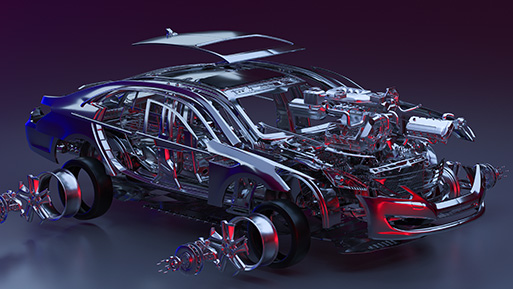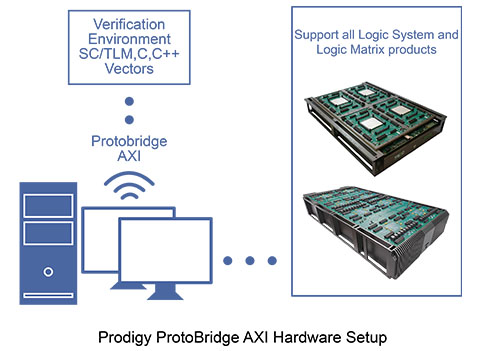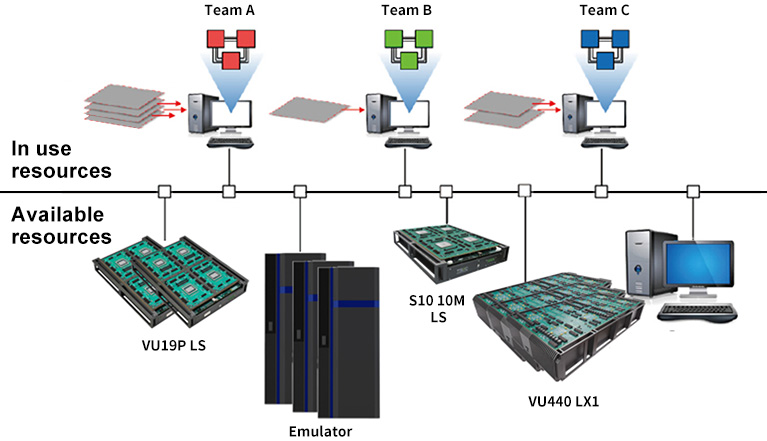Automotive systems are becoming increasingly more intelligent. In addition to the much hyped about autonomous cars hitting the market, today's vehicles are expected to behave much like a smart house in that every aspect of the cars internal operations is monitored, controlled and communicated to other functions of automobile. An example of this is the intricacies of an infotainment system that not only acts as the communication bridge between the driver and the car but also must conduct other tasks not associated with the car's performance. Of course, these complexities give rise to the need for more sophisticated ASICs-moving from digital only to mixed signal. In addition, automobile safety standards, like that of ISO 26262 to avoid/control system failures and detect/control random hardware failures, make these ASICs very different from other ICs. The ASIC architecture must now include position control, speed control, hysteresis control, timing control, etc. These ASICs must also meet other strict standards for reliability, qualification, and longer life cycles all leading to significant development time and money spent on these issues. The qualification process can take up more than 30% of the total cost alone.

Implementing the design has inherent risks of requiring multiple tape-outs and re-qualifications that can increase the cost and lengthen time-to-market beyond what is acceptable. Furthermore, customized automotive tape-outs are much harder to schedule with foundries due to the low volume of such ASICs compared to other more dominant higher volume ASIC counterparts. Reducing these risks is crucial to remain competitive. FPGA prototyping drastically reduces these risks by testing and verifying the ASIC design functions long before the design is finalized. By performing FPGA-based prototyping before layout generation, any issues in the design or specification can be easily identified reducing the possibility of re-spins and multiple tape-outs.
Today's FPGA prototyping systems are built to handle even the most complex designs. Automotive ASIC functions require not only mixed-signal verification but also detection of parasitic effects that are common in the automotive environment, which can be difficult to model. The prototyping systems can readily tackle the mixed-signal aspects of the design and can easily model the parasitic effects because of the low operating frequency in which they occur. Unlike simulation models, which are either not accurate enough or too slow, FPGA prototyping models deliver the extreme accuracy and fast speeds required to effectively verify the design.
The ability to link the FPGA models with safety compliant development tools such as ISO 26262 is a must. Transaction-level interfaces play a critical role in being able to bridge the abstraction level between behavioral models and live hardware. These transactors offer a way to communicate between software running on a host and an FPGA-based prototyping platform that often includes memories, processors, and high-speed interfaces.
S2C's unique patent-pending Prodigy ProtoBridge™ System is a solution that allows for just this type of high-speed communication. ProtoBridge supplies a transactor interface between a software program and the world of AXI-compliant hardware. There are two key parts to this: an AXI-to-PCIe bridge that connects to a host computer, and a C-API that communicates to the design through the bridge. The software-to-AXI transactor offers new flexibility to designers building ARM-based systems. And coupling this to a PCIe interface supporting transfer speeds up to 500 Mbytes/sec, provides a perfect development platform for data-intensive applications.

A system like this allows designers to maximize the benefits of FPGA-based prototypes much earlier in the design project for algorithm validation, IP design, simulation acceleration and corner case testing. A prototype combined with a transactor interface makes a range of interesting applications possible throughout the design flow.
As we have noted earlier, the multitude of systems within the automobile must all work together and communication with one another effectively. However, the designs of these individual components are usually created, tested, verified, and implemented by vastly different groups within the same company. Add to that that many of these teams and people within each team are location in different geographical locations and you begin to see yet another complexity arising. How do you leverage the resources and share the information born by these different groups? S2C's Cloud Cube™ and Neuro™ systems provide an ideal host FPGA farm to allow a large number of remote users to run system tests and software development concurrently.

The Prodigy Cloud Cube is an enterprise-class chassis that supports up to 32 FPGAs, using a combination of any the Prodigy Logic Modules while the Neuro cloud-based software interface allows the management of parallel/remote software development. This type of approach also provides for a low cost solution to enable a large number of replicates.
S2C's entire Prodigy Complete Prototyping Platform provides solutions for every aspect of your design and can be seamlessly incorporated into the original Automotive ASIC design flow. We provide the most comprehensive array of prototyping logic modules to fit your design size as well as the largest library of pre-tested prototyping IP and reference design flows to speed up and simplify your prototyping process. Our Prodigy Cloud Cube that when combined with our Neuro rapid prototyping software to manage parallel/remote software development can be used as a regression farm for automotive applications. The patent-pending Prodigy ProtoBridge System allows for high-speed communication between software running on a host and an FPGA-based prototyping platform through the use of transactors. Our Prodigy Player Pro Software helps to configure the prototype and provides remote system monitoring and control. The compile functionality within Player Pro offers advanced partitioning and the soon to be released Prodigy Multi-Debug System will relieve the arduous and error-prone task of debugging each FPGA manually. S2C's suite of Prodigy FPGA-based prototyping solutions is the most comprehensive on the market to help you realize the genius of your next design.